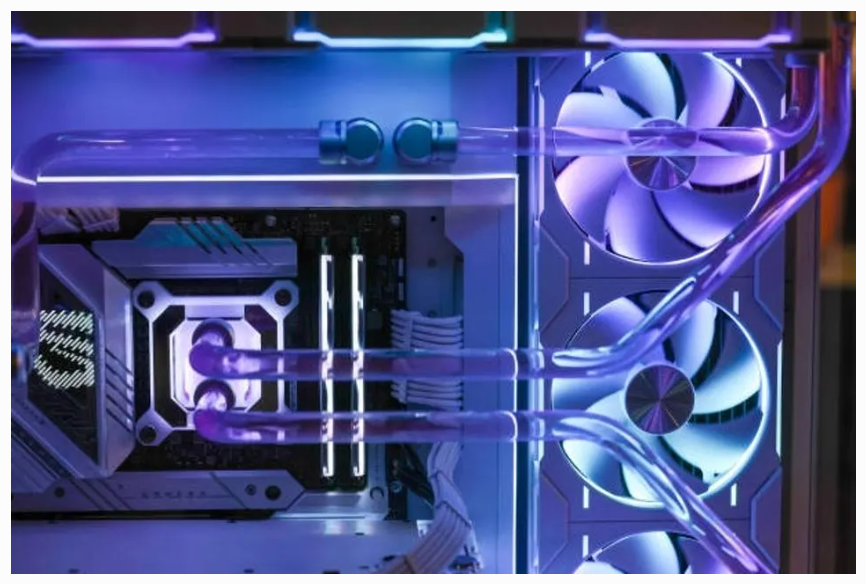Chris Sharp is CTO and Executive Vice President of Service Innovation at Digital Realty.

AI undeniably transforms industries, redefines efficiencies and drives innovation. However, as organizations increasingly adopt AI to fuel growth, more considerations than transformative potential come into play. The focus isn’t simply on what AI can do; it must factor in the environmental impact of achieving such outcomes.
Gartner forecasts global spending on AI software to grow at a compound annual growth rate of 19.1% over the next six years. President Trump’s announcement of a $500 billion investment in AI infrastructure through the Stargate project underscores the U.S.’s intensified efforts to outpace global competition in the AI race, bolstering innovation and reinforcing the nation’s technological leadership. This commitment reflects the appetite for high-performance computing. Yet this innovation comes with a price tag for the environment. AI development demands massive energy resources, placing data centers at the forefront of the sustainability debate.
A recent survey from CFO revealed that 94% of executives feel compelled to prioritize environmental, social, and governance (ESG) initiatives. With AI’s energy demands colliding with corporate carbon commitments, the challenge becomes clear: How can the tech sector—particularly data centers—meet escalating AI workloads while adhering to sustainability standards?
The answer lies in combining innovation with responsibility, starting with how we cool our data centers.
Rising AI Workloads And The Role Of Data Centers
The demand for AI workloads continues to rise at unprecedented rates. According to McKinsey, global data center capacity could grow annually by 19%-22% through 2030, reaching anywhere between 171 to 219 gigawatts. These facilities have become the backbone of AI’s evolution, enabling advancements across healthcare, manufacturing and finance. However, managing environmental considerations amid this meteoric rise is no small task.
Data centers’ extensive server racks and energy-intensive cooling systems consume significant amounts of electricity. This generates greenhouse gas emissions and consumes large amounts of water. Addressing these challenges requires innovative approaches to sustainable technology. Investing in new technologies to continually improve performance and reduce overall environmental impact allows for improved efficiency and participation in the circular economy. One such technology, liquid cooling, has emerged as a key solution, helping to balance the need for cutting-edge performance with eco-friendly practices.
Liquid Cooling: A Sustainable Evolution
AI workloads are notoriously energy-intensive. According to recent reports, a single ChatGPT query consumes 2.9 watt-hours of electricity, significantly more than the 0.3 watt-hours used for a Google search, for example. Training complex models requires prolonged, high-density computing that generates immense heat. Traditional air-cooling struggles to keep up, particularly as server racks grow denser, which is where liquid cooling steps in. Liquid, and specifically water, which is roughly 800 times denser than air, offers a solution.
Liquid cooling leverages fluids with superior thermal conductivity to dissipate heat more efficiently than air-based systems. In environments where traditional methods fall short, liquid cooling ensures optimal performance while minimizing environmental impact. It’s no longer a luxury but a necessity for data centers aiming to support advanced AI workloads sustainably.
Best Practices In Liquid Cooling
The implementation of liquid cooling is not one-size-fits-all. Successful systems often combine evaporative, dry cooling and refrigerant-based technologies to adapt to specific workloads and environmental conditions. No matter the specifications, best practices include:
- Prioritizing water stewardship: While liquid cooling is efficient, it’s vital to use recycled water and optimize usage. Monitoring systems can help achieve a balance between cooling efficiency and sustainability.
- Focusing on modularity: As AI workloads evolve, modular cooling systems provide the flexibility to scale efficiently without overhauling entire infrastructures.
- Future-proofing designs: Cooling solutions must accommodate the increasing thermal demands of AI training. Building systems with an eye on tomorrow’s needs ensures long-term viability.
Integrating Sustainability From The Ground Up
Sustainability in data centers begins long before they go online. During construction, embedding eco-friendly practices into the architecture—such as eliminating fossil fuel dependencies and incorporating energy reuse systems—lays the foundation for greener operations. District heating networks, which repurpose excess heat for local communities, exemplify how data centers can extend their sustainability impact beyond their walls.
AI itself can play a role in enhancing efficiency. Smart algorithms optimize resource allocation, predict cooling requirements and ensure energy is used where it’s needed most. AI platforms like our company’s Apollo platform, for instance, can generate substantial energy savings across various locations, equivalent to powering over 1,600 U.S. households annually. This symbiotic relationship—using AI to mitigate its environmental footprint—is a promising frontier for sustainable technology.
A Better Way Forward
As the tech industry grapples with the dual mandates of innovation and responsibility, the role of cooling systems cannot be overstated. Liquid cooling addresses the pressing challenges posed by AI’s high-density workloads, offering a scalable, efficient and sustainable solution.
In the short term, balancing water usage and adopting responsible cooling practices are critical. In the long term, advancements in cooling technology will drive even greater efficiencies, enabling data centers to meet escalating demands without compromising environmental commitments. By prioritizing sustainable infrastructure, the industry can pave the way for a future where technological progress and environmental stewardship go hand in hand. The journey toward greener data centers is just beginning, but with liquid cooling at the helm, it’s a journey that’s as sustainable as it is innovative.
Article Credit: forbes